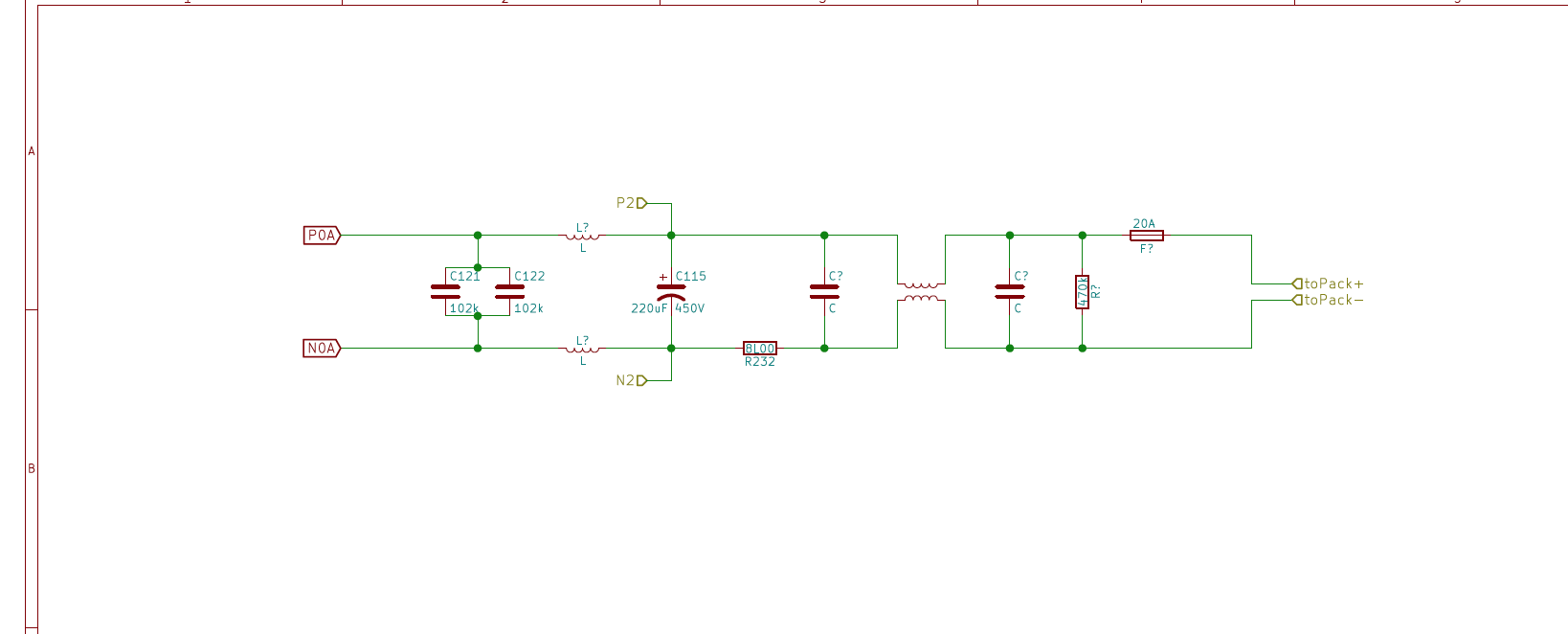Did a really lengthy post about answering some of Electronpushers questions, but took too long and the form timed out and I lost it all.
So heres an abbreviated version
"Do we need to remove the black stuff in the dog house, or can we mount the new snubber caps on the riser (I know the rise is for SMD,
not sure if it is possible to retro fit through the hole onto it or not)."
My vertical riser PCBs were both damaged too much on the two OBCs that I've looked at so far. If your one looks re-usable, that would save you some time. I still managed to rework this without removing the main PCB from the box. I used a box cutter knife (did not have an exacto scalpel) to cut strips in the black pottiing stuff. Then I dug out with a tiny small screw driver. I also have some dental tools I bought from local chemist to do some finer cleaning. In my case, I desoldered and removed the vertical PCB and used the remaining pins to solder the two replacement through hold caps back to the main PCB, so I left the vertical PCB out altogether.
"Do we need to remove the board from the waffle plate, or can we do the diagnosis and repair with it attached to the waffle plate?"
You can test most of everything without removing the main board from the waffle or removing the main board from the box.
KIEV has done a really nice job of a schematic page with the connecting pins on the white stips on the main board that connect to the waffle.
You can use that page and an ohm meter set to DIODE testing to check all the diodes, bridges, and half the IGBT to see if most of it looks good.
"Can the board with the dog house etc be removed without desoldering?"
The vertical riser PCB inside the dog house cannot be removed without desoldering 8 pins (4 on front and 4 on back)
The doghouse is not a seperate board, but just an area on the main PCB that has a plastic boarder filled with the black potting stuff.
If you do want to remove the main PCB, you have to one by one LABEL and remove all the wires with blade connectors.
Then the four screws that mount the PCB to the box in the corner are removed.
Then all 5 standoffs need to be removed. The screw in the center of the Main PCB is removed, but the standoff that it screws into ALSO has to be removed. The four outer standoffs also need to be removed, because even though it looks like they do not tie down the PCB, They bolt the heatsink of the waffle to the box, and since the waffle is still soldered to the main PCB, its still fixed to the box until all five of these are removed.
So heres an abbreviated version
"Do we need to remove the black stuff in the dog house, or can we mount the new snubber caps on the riser (I know the rise is for SMD,
not sure if it is possible to retro fit through the hole onto it or not)."
My vertical riser PCBs were both damaged too much on the two OBCs that I've looked at so far. If your one looks re-usable, that would save you some time. I still managed to rework this without removing the main PCB from the box. I used a box cutter knife (did not have an exacto scalpel) to cut strips in the black pottiing stuff. Then I dug out with a tiny small screw driver. I also have some dental tools I bought from local chemist to do some finer cleaning. In my case, I desoldered and removed the vertical PCB and used the remaining pins to solder the two replacement through hold caps back to the main PCB, so I left the vertical PCB out altogether.
"Do we need to remove the board from the waffle plate, or can we do the diagnosis and repair with it attached to the waffle plate?"
You can test most of everything without removing the main board from the waffle or removing the main board from the box.
KIEV has done a really nice job of a schematic page with the connecting pins on the white stips on the main board that connect to the waffle.
You can use that page and an ohm meter set to DIODE testing to check all the diodes, bridges, and half the IGBT to see if most of it looks good.
"Can the board with the dog house etc be removed without desoldering?"
The vertical riser PCB inside the dog house cannot be removed without desoldering 8 pins (4 on front and 4 on back)
The doghouse is not a seperate board, but just an area on the main PCB that has a plastic boarder filled with the black potting stuff.
If you do want to remove the main PCB, you have to one by one LABEL and remove all the wires with blade connectors.
Then the four screws that mount the PCB to the box in the corner are removed.
Then all 5 standoffs need to be removed. The screw in the center of the Main PCB is removed, but the standoff that it screws into ALSO has to be removed. The four outer standoffs also need to be removed, because even though it looks like they do not tie down the PCB, They bolt the heatsink of the waffle to the box, and since the waffle is still soldered to the main PCB, its still fixed to the box until all five of these are removed.



































